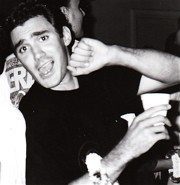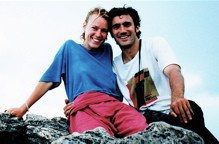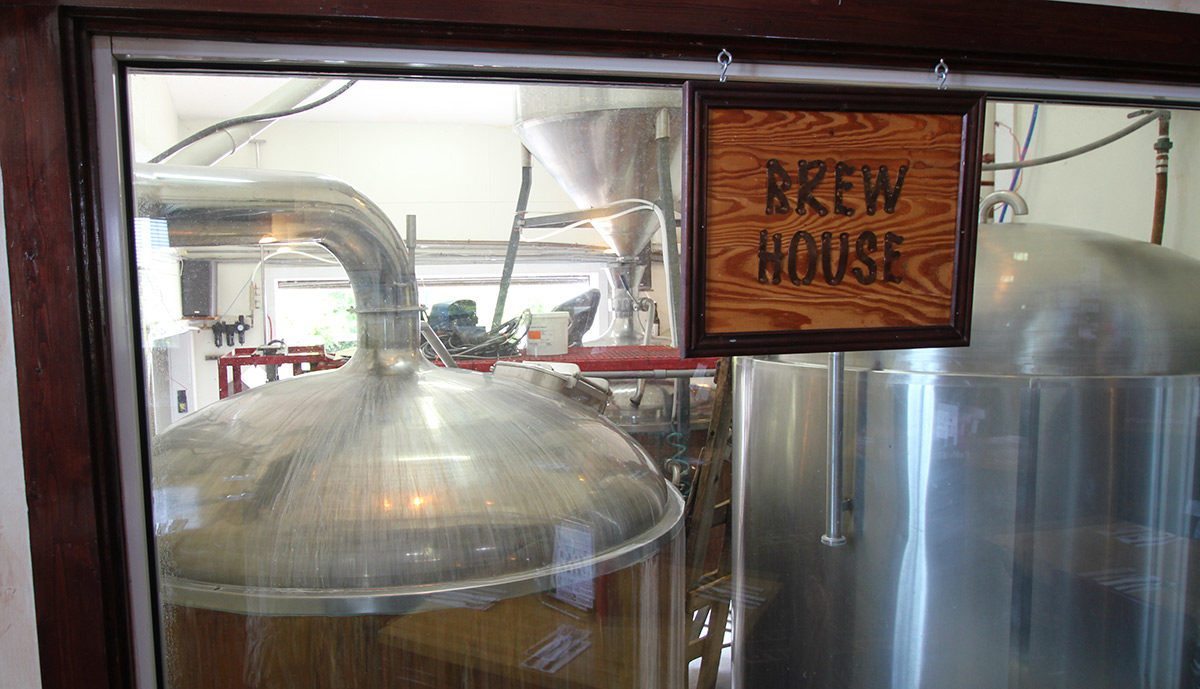OBX Brewery concept began on a Far East island

Seventy miles off the southern coast of Thailand, along an archipelago in the Andaman Sea, lies Koh Tarutao island. There, on Christmas 1991 over “cheap Thai rum” and a day of playing cards, two Peace Corps workers began to formulate the idea of a partnership.
Ten years later, that conversation from half way around the world would bring the incarnation of the Outer Banks Brewing Station, and 10 more years down the road the OBBS would celebrate its 10th anniversary, a milestone for any restaurant or pub, even more so in the fickle and competitive Outer Banks restaurant market.
The behind-the-scenes story of the Brewing Station is as fascinating as the evolution of the restaurant itself. The background of the founders and other key players informs the entire concept of what is arguably an OBX icon.
It follows two paths that eventually merge into a risky, but ultimately successful venture. One path begins in Hertford and the summers spent in northeast North Carolina by one of the founding pair. The other brings two future partners together in San Francisco on their way to Thailand and a two-year stint with the Peace Corps.
Aubrey Davis, one of the future entrepreneurs, spent many a summer in these environs. His grandparents lived in Hertford and summers spent there included frequent trips to the Outer Banks. And in what is not an unusual story line for this section of the Tar Heel State, we discover just how much social interaction existed between the Outer Banks and its neighbors to the north.
First of three parts
Davis’ grandfather actually met Orville and Wilbur Wright in 1902. Elizabeth City was a major port in those days, and Davis’ grandfather, then four or five, met the famous pair loading their gliders for the trip to Kitty Hawk while his great-grandfather was picking up supplies at the same River City dock.
For Davis, however, the images of the remote and open areas of the Outer Banks would remain and later resurface in a conversation that brought the other major actor in this story to our barrier island.

In 1991, Davis and his OBBS partner, Eric Reece, were newly minted college graduates. Reece had a background in applied physiology while Davis was educated as mechanical engineer interested in rural water generation. Davis hailed from NC State, Reece graduated from Boston University.
The two young men did not know each other, but they both were called to join the Peace Corps. Davis wished to pursue water projects; Reece had become interested in finding ways to generate income for primary schools in underdeveloped countries, particularly though lunch programs.
Peace Corps orientation and training was held in San Francisco, where the two first met. As Reece remembers, “We hit it off right away.” When their training was over, the two of them and another future Brewing Station player, Tina Mackenzie, were Thailand bound.
In Bangkok, Davis and Reece remained in close contact during three months of immersion training, where they lived with Thai families learning language, customs and other facets of what would become their home for two years.
The training complete, the two were assigned to polar ends of Thailand, with Reece and Mackenzie heading north and Davis assigned to a string of islands along Thailand’s southern coast, an area not too distant from Malaysia.
The two maintained contact, seeing one another at Peace Corps meetings and R&R breaks. It was during one of those breaks where the Brewing Station concept began to take form.
Part II
It’s Christmas Day, 1991. Aubrey Davis’ Peace Corps assignment landed him on remote coastal islands rich in fishing resources. Thai park rangers were tasked with protecting these fishing grounds, which were constantly harassed by fishing boats from Malaysia and other countries.
“The raiders were using dynamite and even cyanide poisons to harvest fish,” he said. “The rangers had walkie-talkies to communicate, but the islands where they were stationed lacked reliable power generation, so the walkie-talkies often could not be used. When the rangers boarded a boat, they were unable to call for backup, for example.”
Davis’ job was to oversee installation of solar panels along the islands to provide power to the remote ranger stations to charge the walkie-talkies and the primary radios. This introduction to alternative power generation and other “green” ideas would later play a significant role in the Brewing Station’s character.
Eric Reece, the fellow Peace Corps member Davis had met in training, visited Koh Tarutao during Christmas break. As he describes it, “Aubrey and I were in this little hole-in-wall beach bar drinking cheap Thai rum and playing cards the entire day.” Discussion turned to what they would pursue when they returned to the U.S.
The pair knew they wanted to work together and their first idea was to open a “general merchandise store,” somewhere in the eastern mountains or along the coast. Virginia and Tennessee, particularly the mountain regions were early considerations.
Their Peace Corps hitches were up in 1993 and they returned to the United States. Davis and Reece trod different paths for a time, but maintained contact over the ensuing years

Reece stayed on the West Coast, returning to his educational background. He found himself employed for 18 months with pharmaceutical giant Bayer Biologicals in Berkeley. There he labored in the Product Science Division producing a drug called Coaginate for hemophiliacs.
Davis joined the National Park Service with the goal of working in one of the agencies many outdoor expanses. Instead, he found himself deep within the bowels of the White House during President Clinton’s “greening of the White House” project, literally working out of the historic structure’s bomb shelter.
Davis remembers “we completely replaced the roof, and tore out and replaced the entire HVAC system.” As a first-term president, Clinton wished to stay in the White House, so entire parallel systems were built to keep the residence operating while the renovations took place.
Working in the White House required Davis to obtain high-level security clearances and came with some interesting stories.
“I can’t count the number of times I worked in the presidential bedroom and I was probably in the presidential bathrooms more than the president,” he said.
Another Clinton family member, “Socks,” the First Cat, spent more time in the bomb shelter with the project staff than “he did with the First Family.”
The Clinton project lasted until 2000, and Davis recalls one week where he logged 106 work hours. Clearly, his Park Service tenure was not affording the former Peace Corps worker opportunities to enjoy the beautiful vistas of our National Parks.
Meanwhile, in California, Reece had become equally disenchanted with his corporate life….. (read more below)
Story by Russ Lay
Next: The Beginning of the Brew Station
Last Part: After 10 years, Beer Still Heart & Soul of the Pub





